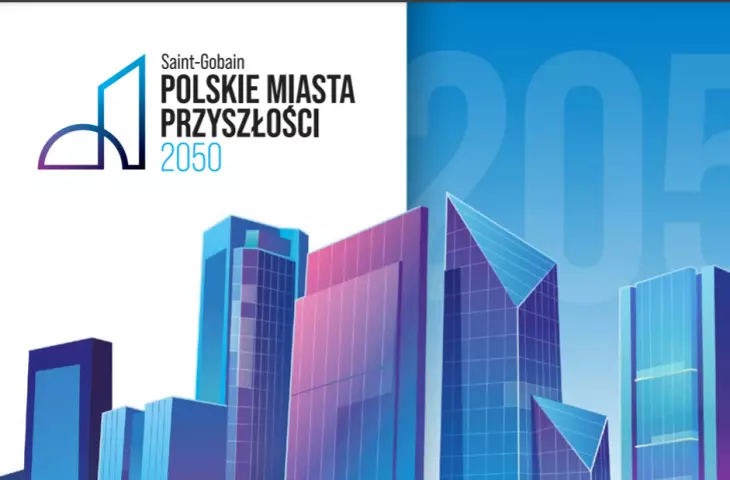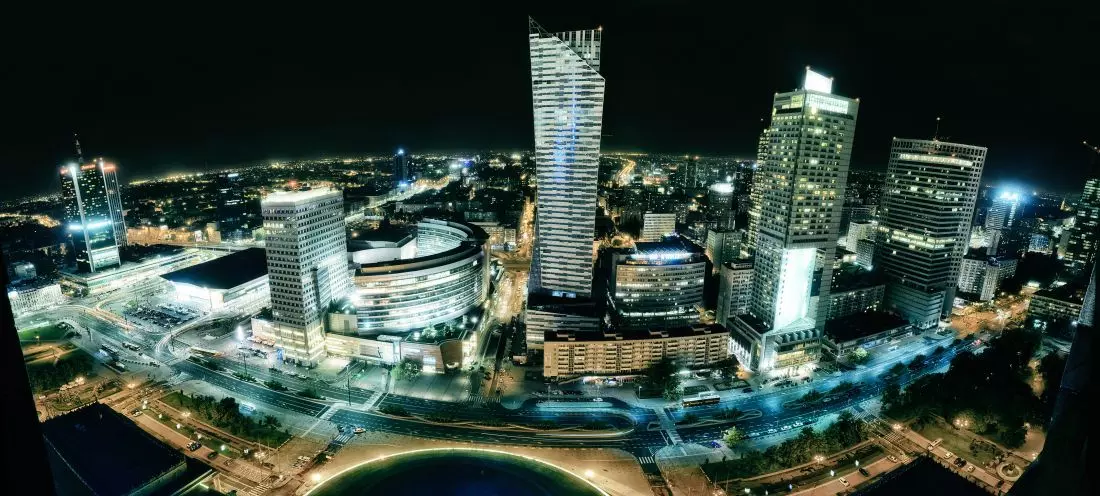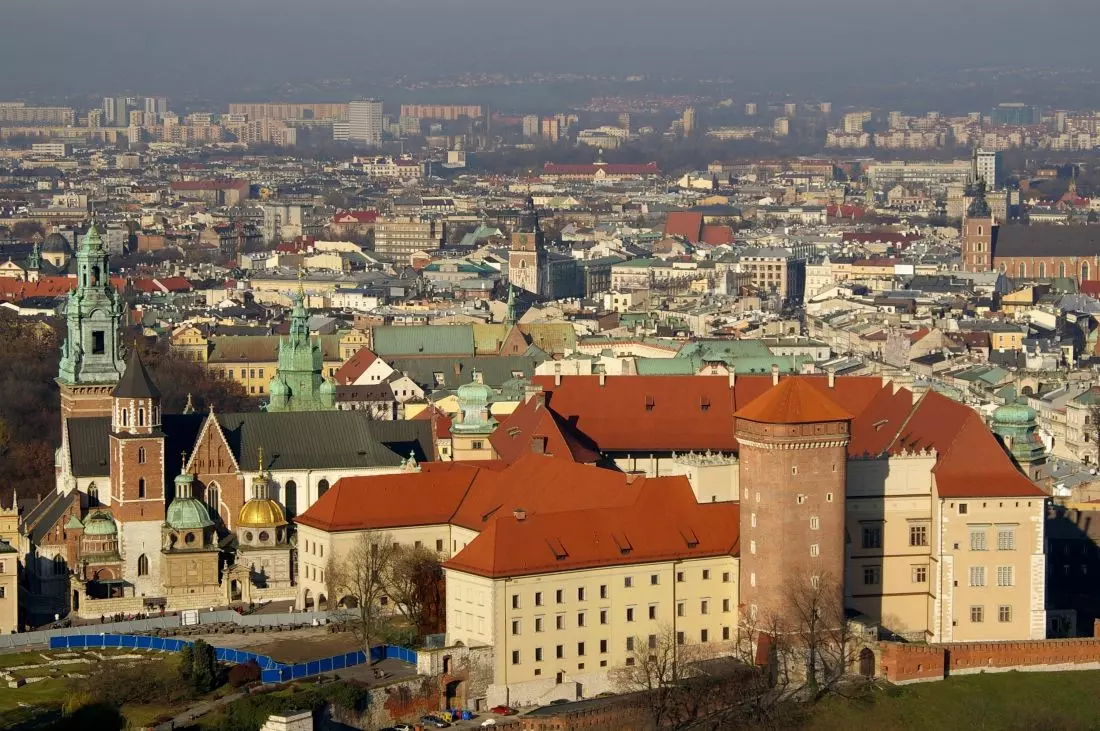What awaits Polish agglomerations in the future? In what direction do they need to develop in order to minimize problems arising from climate change, urbanization, automation or health crises? The authors of the report in question cite various visions of the future to which we can respond.
what does the future hold?
A report entitled "Polish Cities of the Future 2050," prepared by the Saint Gobain Group and the Polish Society for Future Studies, premiered in early December this year.
The report covers seven of Poland 's largest cities: Warsaw, Wroclaw, Katowice, Gdansk, Krakow, Poznan and Lodz. By 2050, most people will live in large centers. In preparing the ranking of Polish cities of the future, we wanted to diagnose the state of readiness of our agglomerations to meet the challenges that the future brings. And these, it turns out, are not at all as optimistic as we might expect. Many challenges await us, which can only be met by authorities, social organizations and representatives of companies that work together and are aware of the problem, and which will have a stake in the transformation of cities over the next three decades," says Henryk Kwapisz, director of institutional relations at the Saint-Gobain Group, which is the initiator of the "Polish Cities of the Future 2050" ranking, about the idea behind the report.
methodology and scenarios
The basic method used by the report's creators was the so-called Foresight - a study on likely paths of long-term development. The most important factors influencing the assessment were: office and residential buildings, transportation and infrastructure, retail, hotel and service investments, and the last factor, education. Based on these criteria, rankings were conducted between Poland's most important agglomerations. When evaluating buildings and infrastructure, the primary evaluation tool was certificates, relating to energy efficiency or ecology.
Ranking of cities of the future 2050
© Saint Gobain Group / Polish Society for Future Studies
The authors distinguished three scenarios, assuming different future developments.
The first, titled "Freedom in Quarantine," assumes a process of automation, resulting in only 20 percent of people working. Cities compete for residents because of their main source of income - government subsidies that depend on the number of residents. Social life has been severely curtailed by sanitary risks. Everything has been transferred to the virtual world.
The second scenario, "Under the Blob," assumes that we will work 12 hours a day. In this scenario, urbanization is the primary trend; more than 80 percent of people in Poland will live in cities. All buildings will have their own independent water and sewage systems, and many of them will have a positive energy balance through the use of RES installations and modern building technologies. Adapted to climate challenges, the cities are far from utopian visions.
The last scenario, titled "This is the climate we have," is based on the urban lifestyle crisis. According to this scenario, 90 percent of people will spend their time outside cities. Local communities will break up into thousands of small centers. Energy and water prices will be extremely high. Education and housing investment will be fully centralized - it will be impossible to learn or build on one's own. In this scenario, the city is an unpleasant necessity.
The paths described in the above scenarios may cross and merge, but most of them address the most important problems of urban development, making them to be taken seriously.
Which cities fared best?
The winner of the list was Warsaw. It is in this city that there is the largest scale of investment in commercial real estate, which receives multi-criteria certification, including in terms of ecology, economy and their social quality. Warsaw also wins in the transportation category, as it is the first city in Poland to achieve the legal target for the share of zero-emission vehicles in public transportation scheduled for 2023.
Warsaw took first place in the ranking
Photo: Radek Kolakowski, © CC0
The next highest ranked city is Wroclaw. The city ranked high in every ranking, except for certified residential construction, but many such investments are already underway. The third place in the ranking went to Katowice, followed ex aequo by Poznań and Gdańsk, Łódź and the last place, Kraków.
Cracow at the very end
Krakow 's dismal performance is the result of its poor position in the rankings. In no category did the city break into the top three. Among office infrastructure, only the AFI V office building (designed by Iliard Architecture & Interior Design) was mentioned as a good example. There is also no residential building in Krakow that meets the conditions for certification. The report mentions one housing development currently under construction. The development of electromobility and bicycle traffic was assessed negatively, with Krakow receiving the worst rating in this ranking. Hotel, retail and service infrastructure was also rated poorly from a sustainability perspective.
A spokeswoman for Krakow Mayor Monika Chylaszek commented on the report for Gazeta Krakowska:
This is not a reliable report, as the data for the analysis does not fully correspond to the tasks performed by the cities, but is based on data from certification companies and the Green Building Association. Before the Saint-Gobain Group becomes an expert on the future of cities, I suggest checking what it does and what the residents of the towns where it has its production facilities say about its activities. There are more than 100,000 associations in Poland, and for most of them, you can read on their websites that they bring together experts, professionals or enthusiasts.
Krakow was at the bottom of the list
Photo by Jakub Halun, © CC BY-SA 4.0.
The statement by the mayor's spokeswoman is based on criticism of the report's methodology and an incomprehensible attack directly on the company, ignoring the participation of the Polish Society for Future Studies conducting the research in the creation of the report. It is difficult to say what is incorrect in adopting the criterion of environmental certification, when the basis of the report is to show adaptation to the problems of the future, including the effects of climate change. Monika Chylaszek did not address the issue of transportation, where certification was not relevant.
So should the report's results be crossed out because they don't agree with the political vision? For the magistrate, will a credible study be only those showing what they care about?
Krakow has been described as a city that does not measure up to sustainable development that combines transformational ideas. According to the report's authors, it is a city solving old problems - not one that can prepare for the challenges of the future. Will it become an open-air museum against the backdrop of Poland's developing cities, or will it try to get on the path of development, however, we will find out in the future?
The entire report can be found on the Saint Gobain Group website .


























